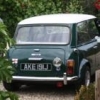y???????????
Firstly, please stop typing in TXTSPK.
Why does Sprocket laugh? Because this thread is full of the same old myths being trotted out all over again. How fast do you think the charge flows through your inlet
manifold? How dense do you think it is? Do you know that air is a very good thermal insulator? Given all that, how much heat do you think the charge is going to pickup from the
manifold at delta-T of about 80 degrees in the fraction of a second it is in there for? How warm do you think it will get, bearing in mind that the charge is refrigerated by the action of the atomisation at the venturi in the first place? What actually does happen in a
manifold with cold walls is fuel condensation. Fuel condeses on the
manifold walls and flows into the ports as a liquid. Liquid petrol doesn't burn. This is the effect that many people confuse with carb icing but is in fact entirely different. This is why the
manifold should be
heated, to ensure that the fuel that has been atomised stays atomised and the mixture remains the same whatever the weather. It doesn't aid atomisation so much as maintain it once it's occured. Why did the Cooper S not have a
heated manifold? Because it had twin carbs, so it had shorter and straighter
manifold tracts. The charge is in the
manifold for less time and doesn't flow round as many bends as in a single carb
manifold so deosn't make as much contact with cold metal and doesn't tend to condense. An ally
manifold will be colder than an iron one in the same circumstances and not simply because the iron
manifold is connected to the exhaust
manifold. Single carb ally
manifolds need heating.























